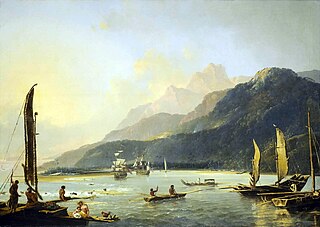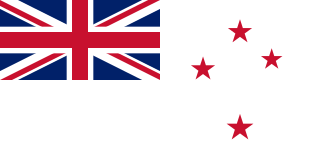| Historic ships of the Royal New Zealand Navy |
|---|
 |
| Alphabetical list |
This is a list of commissioned corvettes of the Royal New Zealand Navy from its formation on 1 October 1941 to the present.
| Historic ships of the Royal New Zealand Navy |
|---|
 |
| Alphabetical list |
This is a list of commissioned corvettes of the Royal New Zealand Navy from its formation on 1 October 1941 to the present.
| Class | Dates | Career | Fate |
|---|---|---|---|
| HMNZS Arabis (K385) | 1944–1948 | scrapped 1951 | |
| HMNZS Arbutus (K403) | 1944–1948 | scrapped 1951 |
| Class | Dates | Career | Fate |
|---|---|---|---|
| HMNZS Echuca | 1952–1967 | Sold for scrap in 1967 | |
| HMNZS Inverell | 1952–1976 | Training and fisheries patrols | Sold for scrap in 1977 |
| HMNZS Kiama | 1952–1979 | Paid off for disposal 1976 | |
| HMNZS Stawell | 1952–1968 | Sold for scrap in 1968 |

The ensign is a maritime flag that is used for the national identification of a ship. The ensign is the largest flag, generally flown at the stern (rear) of the ship while in port. In ports, depending on the ship's origin, it is sometimes identical with a jack on the bow of the ship. Jacks are more common on warships than on merchant ships.

The Royal New Zealand Navy is the maritime arm of the New Zealand Defence Force. The fleet currently consists of nine ships. The Navy had its origins in the Naval Defence Act 1913, and the subsequent purchase of the cruiser HMS Philomel, which by 1921 had been moored in Auckland as a training ship. A slow buildup occurred during the interwar period, and then perhaps the infant Navy's most notable event occurred when HMS Achilles fought alongside two other Royal Navy cruisers at the Battle of the River Plate against the German ship, Graf Spee, in December 1939.

The Grand Fleet was the main battlefleet of the Royal Navy during the First World War. It was established in August 1914 and disbanded in April 1919. Its main base was Scapa Flow in the Orkney Islands.

The Isles-class trawlers were a class of naval trawler used by the Royal Navy, Royal Canadian Navy and Royal New Zealand Navy during World War II.

HMS Adventure was a barque that the Royal Navy purchased in 1771. She had been the merchant vessel Marquis of Rockingham, launched in 1770 at Whitby. In naval service she sailed with Resolution on James Cook's second expedition to the Pacific in 1772–1775. She was the first ship to circumnavigate the globe from west to east. After her return she served as a store ship until 1779. The navy sold her in 1783 and she resumed a civilian career, but retaining the name Adventure. She was lost in May 1811.

Devonport Naval Base is the home of the Royal New Zealand Navy, located at Devonport, New Zealand on Auckland's North Shore. It is currently the only base of the navy that operates ships, and has been in use as a navy base since 1841. The base consists of HMNZS Philomel, the Fleet Support Organisation, and the Fleet Personnel and Training Organisation.

The Australia Station was the British, and later Australian, naval command responsible for the waters around the Australian continent. Australia Station was under the command of the Commander-in-Chief, Australia Station, whose rank varied over time.
HMNZS Tui, formerly USNS Charles H. Davis (T-AGOR-5), was one of nine Conrad class oceanographic ships built for the United States Navy (USN), that later saw service in the Royal New Zealand Navy (RNZN). Serving with the USN from 1963 to 1970, these ships were designed to perform acoustic experiments on sound transmission underwater, and for gravity, magnetism and deep-ocean floor studies.

His or Her Majesty's New Zealand Ship (HMNZS) is the ship prefix used to identify warships and shore facilities commissioned into the Royal New Zealand Navy (RNZN).
HMNZS Kiwi (T102) was a Bird class minesweeper of the Royal New Zealand Navy.

Commissioned frigates of the Royal New Zealand Navy from its formation on 1 October 1941 to the present:

Commissioned survey and research vessels of the Royal New Zealand Navy from its formation on 1 October 1941 to the present:

Commissioned cruisers of the Royal New Zealand Navy from its formation on 1 October 1941 to the present:

The New Zealand Division of the Royal Navy also known as the New Zealand Station was formed in 1921 and remained in existence until 1941. It was the precursor to the Royal New Zealand Navy. Originally, the Royal Navy was solely responsible for the naval security of New Zealand. The passing of the Naval Defence Act 1913 created the New Zealand Naval Forces as a separate division within the Royal Navy.

Commissioned logistic and support vessels of the Royal New Zealand Navy from its formation on 1 October 1941 to the present:

Diving tenders of the Royal New Zealand Navy from its formation on 1 October 1941 to the present. There have been four diving tenders, all with the same name. The current tender was commissioned in 2019.

Commissioned training boats of the Royal New Zealand Navy from its formation on 1 October 1941 to the present:

834 Naval Air Squadron was a Naval Air Squadron of the Royal Navy's Fleet Air Arm. The squadron was formed in Jamaica in December 1941 as a torpedo bomber squadron equipped with Fairey Swordfish aircraft. The squadron was embarked on HMS Archer from March 1942 to February 1943 and involved in convoy escorted duties in the Atlantic and Mediterranean. 834 NAS then joined No. 19 Group RAF Coastal Command for duties in the English Channel. In June a flight of Supermarine Seafires was formed and the next month the squadron was embarked on HMS Hunter. The squadron took part in the Salerno landings in September, before being transferred to HMS Battler to provide convoy escort duties in the Indian Ocean. 834 NAS received a further flight of 6 Wildcat Vs in April 1944 and the Seafire flight was disbanded in July. The squadron returned to the UK in November 1944 and was disbanded in December.